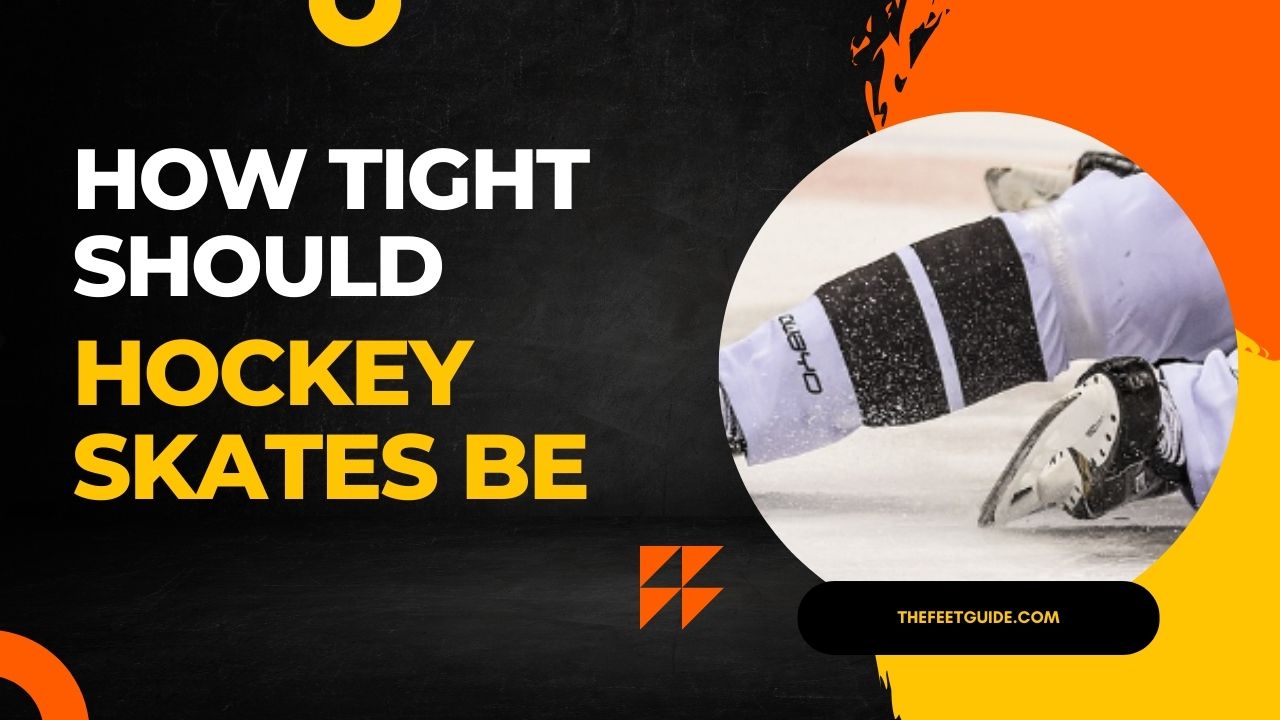When it comes to hockey, ankle support is very important and plays a major role in the comfort and the amount of performance you can get out of your skates. Skates being too tight or very loose can restrict the movement of your ankles and make it difficult to skate properly.
To mitigate injuries, it’s essential to tighten your skates properly while making sure that the skates are of the perfect size and your ankles and feet have a snug fit; not too tight, not too loose. In this article, we will delve further into the importance and reasoning behind why proper ankle tightness is necessary.
How tight should the skates be?
When you’re just starting out, it is extremely normal to not know how tight your skates should be or how you are supposed to lace them. Even if you know good lacing methods, deducing how tight your skates should be is a completely different challenge in itself. For good skating performance, properly lacing your skates prior to getting on the rink is imperative to getting a good grip and ankle flex.
Ankle flex in hockey refers to the ability of the ankle joint to bend forward and backwards. This is important for hockey players because it allows them to generate power and speed in their skating stride. Many beginners and even adults at times, don’t realise how important this is and end up lacing their skates as tight as they can for the “best performance”, which is completely wrong.
Free movement of your ankles is very crucial if you want good flexibility and agility in your movement on skates. In general, hockey skates should neither be tight nor too loose. This also goes for the tightness around your ankles. Having a snug fit that’s not too tight allows proper blood flow and reduces the chance of getting an ankle sprain. Of course, you are free and even recommended to play around with how tight they are if it makes you feel more comfortable.
Why you shouldn’t wear skates that are wrongly laced or are too tight around the ankles?
Apart from restricting your overall motion, loosely fastened or tight skates are notorious for various injuries you might get if you’re not careful enough. Here, we have mentioned a few common ones along with tips for such mitigating injuries.
Lace bites
Lace bites occur due to excessive friction between the tongue of your ice skates and your foot caused by overtight laces and wrong skate sizes. They usually occur at the ankles and the top of the feet and cause pain and discomfort when you’re tying laces or trying to wear any shoes.
There really isn’t a definite and straightforward solution to lace bites, but trying to lace your shoes outside-in and skipping eyelets or just wearing loose skates can help alleviate pressure and relieve pain.
Numbness and tingling sensations
Skate boots tied too tightly carry a risk of the laces cutting into the skin and restricting the bending motion of your knees and ankles. Further adding to this, tight laces restrict the blood flow in your feet, slowly making them numb and giving you the unpleasant, tingly feeling, as if something is moving inside your skate.
This isn’t permanent and does not cause any serious damage but during a high skates high focus game, who knows what might happen. Ensure your skates aren’t too tight just in the name of better performance because it isn’t so.

Ankle sprains
Wearing skates that are tied too loosely can allow the feet to move inside the skates. Due to the extremely physical nature of hockey, your feet are bound to move in a multitude of directions and with your feet not having enough grip inside your skates, they will slip and risk causing painful sprains along your ankles.
To mitigate this, make sure you’re wearing skates that fit you perfectly and that the laces aren’t loose enough to let your feet slide inside.
Tips to mitigate injuries caused by extremely loose or tight skates
Apart from making sure your laces are tied snugly and with proper support and comfort to the ankle, here are some additional tips to help prevent injuries:
- Stretch your ankles regularly before and after skating, and in between breaks if your skates don’t feel comfortable.
- Wear good quality socks with proper padding that can wick away moisture.
- If your skates start feeling uncomfortable or your feet start slipping inside them, stop skating and adjust your laces.
- Consult a professional if you have any pre-existing conditions or injuries to your feet and ankles
Frequently Asked Questions
How tight should hockey skates be around the ankles?
Hockey skates should have a comfortable, snug fit around the ankles. Lacing skates too loose or too tight increases the chances of sprains, lace bites, and blisters.
How do I know that my skates are laced properly?
The best way to know how tight should you lace your skates is to experiment until you find the most comfortable fit yourself. As a general guideline, always start by lacing snugly around the toes and gradually loosening the laces as you move up. You should feel a little pressure around your ankles and be able to wiggle your toes a bit.
What are some other things I can do to prevent injuries while playing hockey?
Using supports and ankle braces is always nice if you have a history of ankle injuries and need extra support. Exercising your ankles and taking breaks while skating also reduces stress on your ankles and gives them time to recover after being exhausted. You should also pay attention to your feet and stop skating if they hurt until you resolve the issue, instead of just ignoring it.

